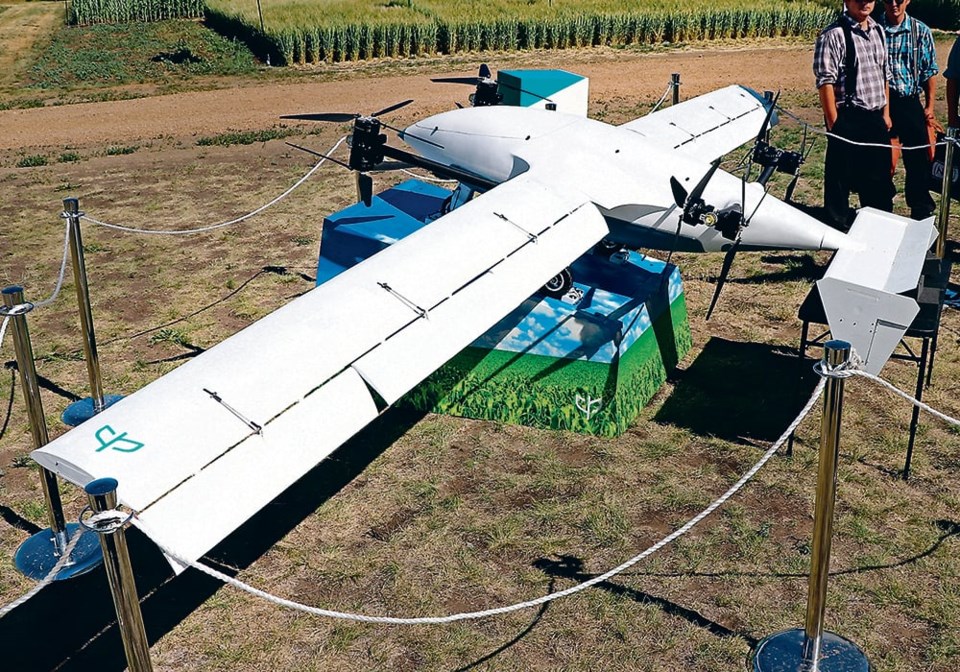WESTERN PRODUCER — Drones are used to apply crop protection products in many countries and Canadian farmers are at a disadvantage because the regulatory framework here is incomplete.
There is also a concern that without a path farmers can follow to legally spray their crops with remotely piloted aircraft systems (RPAS) that they will just do it illegally.
I’d say this concern is warranted because RPAS capable of spraying crops are being sold in Canada, and they’re far too expensive to buy as an ornament.
In Canada, the regulatory bodies charged with creating rules for spraying with RPAS are Transport Canada and the Pest Management Regulatory Agency.
Transport Canada regulates the actual flying of the drones, including the classification of drone types and the licensing of pilots.
There is already a path people can follow if they want to fly drones larger than 25 kilograms and beyond visual line-of-sight, which is a Special Flight Operations Certificate for a Remotely Piloted Aircraft System (SFOC-RPAS).
There are important criteria that people must meet to get a SFOC-RPAS from Transport Canada, but if you demonstrate you can do what you want to do safely, they will take a look at it.
For instance, applicants that plan to fly under four meters, away from aviation and only in unpopulated rural areas will have a decent chance at getting an SFOC-RPAS.
When it comes to the regulation of products that are allowed to be applied with a RPAS, which is the PMRA’s purview, there is no path available to farmers or custom applicators to legally do this.
One of the biggest hurdles before the PMRA can be sure this practice is safe, is the lack of information on spray deposition and drift.
Otherwise, it is extremely onerous for registrars to get RPAS on the labels of their products, and no company has successfully gone through this process in Canada for a crop protection product.
Ag Canada is conducting residue trials that compare drones to conventional ground sprayers when it comes to deposition and drift.
This work is anticipated to be completed in 2025, and it may help streamline the process of getting RPAS on the labels of crop protection products.
I understand the frustration stakeholders have with the PMRA because it is 2022 and it’s still illegal to use an RPAS to spray a crop while the practice has been happening in Asia since the late 1990s.
There are spray drones on the market now that can help farms become more efficient, and some farmers are getting increasingly annoyed they aren’t allowed to deploy them.
It’s time for an all-hands-on deck approach to enable RPAS applications on Canadian farms.
Instead of waiting until the Ag Canada study that’s set to be complete in 2025, there’s an opportunity for other groups involved with crop research to help produce the data the PMRA needs.
It’s time for the federal and provincial governments, as well as producer groups, drone manufacturers and retailers of crop protection products to pony up cash for research.
A strength of Canadian agriculture is its research sector, and with increased funding Canadian researchers could quickly come up with the data the PMRA needs to understand spray deposition and drift from applications with RPAS.
Without a conjoined effort to produce the required data the use of spray drones will remain illegal in Canada for years, because the PMRA is not going to cut a corner on this.
It is important the PMRA does its due diligence because the ag industry is dependent on this agency retaining public trust.
But it’s time to get this show on the road because the large drones are being sold to spray pesticides in Canada, and they’re being flown by people who may or may not be properly trained under conditions that may or may not be safe.



